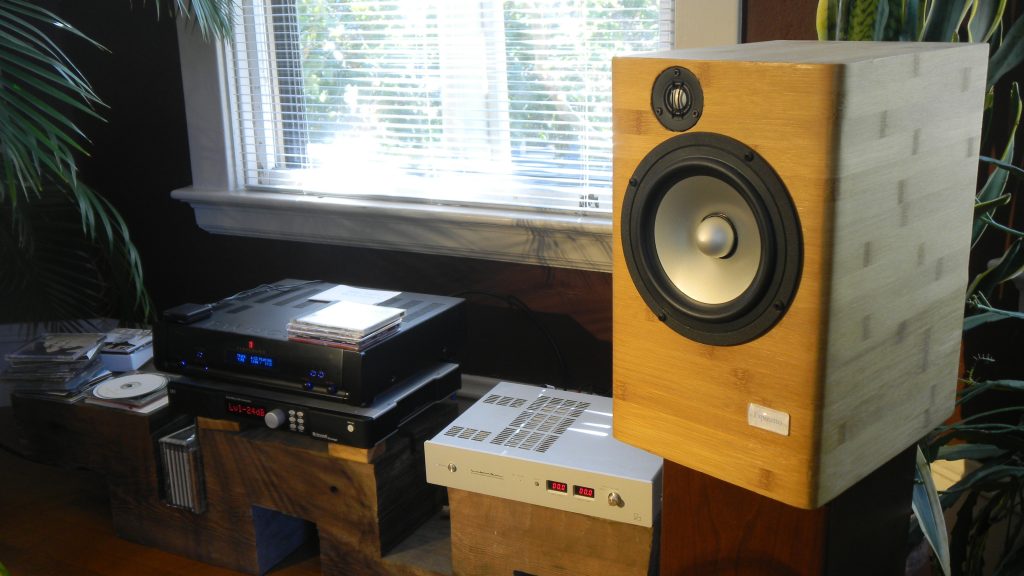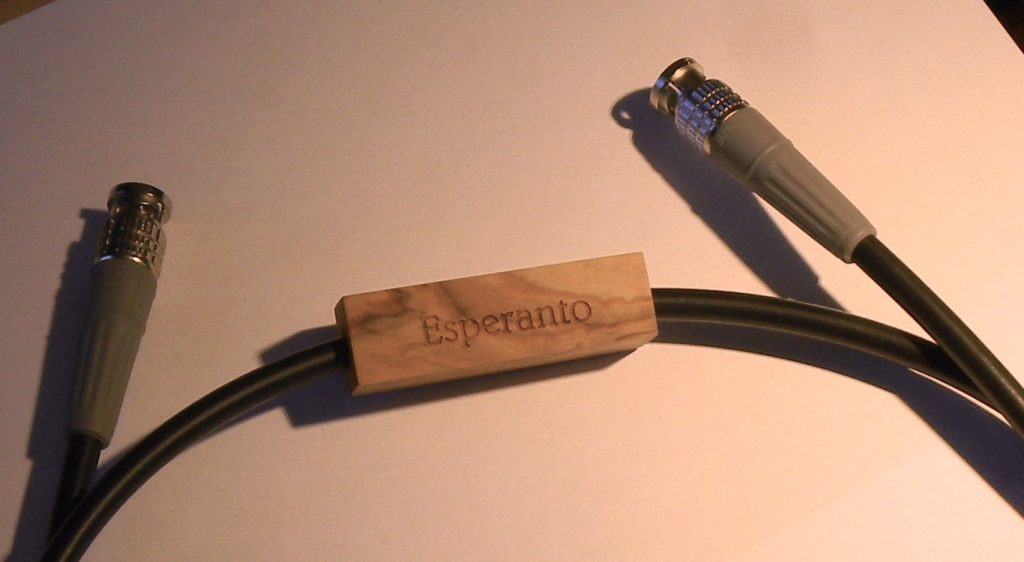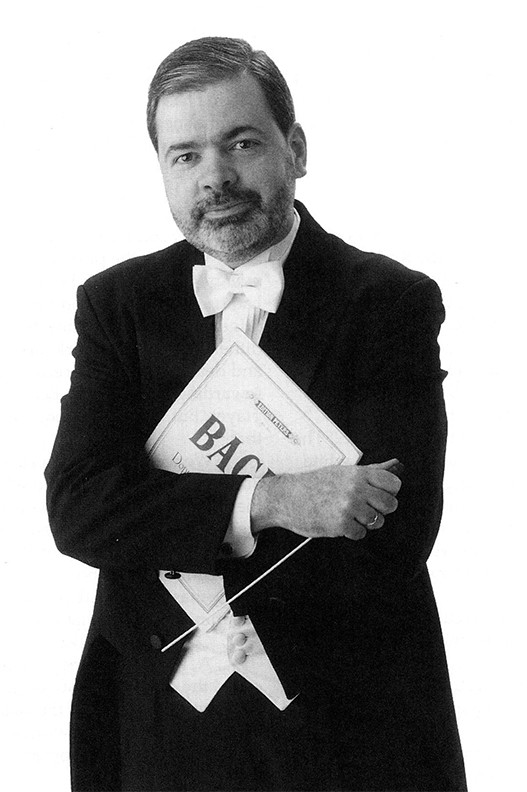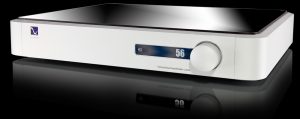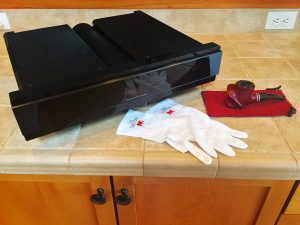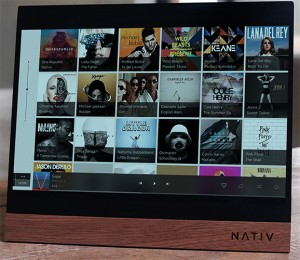Yes, what you see is what you get (if Santa Claus really likes you, that is): A Bricasti M1 Digital-to-Analog Converter with gold-plated casework. United States Manufacturer's Suggested Retail Price, $15,000. (Why do I hear echoes of Auric Goldfinger gloating, "No, Mr. Bond; I expect you to die!")
Bricasti is a Massachusetts, USA company that was started by three exiles from Harmon International's Lexicon division: Brian, Casey, and Tim. Hence the corporate name, which would warm the cockles of any trademark lawyer's heart: Yes! Unique! My puckish sense of humor has at times led me to suggest to the unwary that "Bricasti" is the coastal resort town just North of Brindisi. As Peter McGrath would say, that has the ring of "near-truth" to it.
Bricasti, no surprise, started out in the professional-audio field, offering a "we will cut no corners" reverberation unit that quickly became the Gold Standard in its field. Why? Well, cutting no corners is a good place to start. Bricasti's reverberation units are in use at hundreds of professional installations worldwide. My favorite (of course) is the Boston Symphony Orchestra's recently renovated room (although I still want to call it a "shack") where their archival live recordings and also some recordings for commercial release are made.
Photo © Cheryl Fleming for The Boston Symphony; used with permission.
The BSO's Bricasti reverbs are at the bottom of the cube rack to the left of the main desk.
I first encountered Brian Zolner of Bricasti at a pro-audio trade fair in 2010 where he was showing Bricasti's then-new product, a Digital-to-Analog Converter (DAC) for the home-audio/audiophile market, the "M1." In the first moments of listening (on Sennheiser headphones) to one of my organ recordings from The First Baptist Church in America, I knew that the M1 was a truly exceptional digital source. In August 2011, my comments on the M1 appeared in Stereophile. Many updates to the original model appeared at regular intervals.
Two of the things I admire most about Bricasti both fall under the rubric of W. Edwards Deming's quality principles. The first is continuous improvement: the M1 DAC has undergone quite a few hardware and firmware upgrades. The second is taking care of the customer. For the original purchaser, all firmware upgrades that have not required hardware changes have been at no cost, and the hardware upgrades have been at the manufacturer's internal costs.
W. Edwards Deming was "a prophet without honor" in the US, but his ideas found fertile ground in post-WWII Japan. It was Deming's ideas (that had been ignored or scoffed at in the US) that gave the Japanese automobile industry its lead in quality—and we know how that turned out.
Interestingly enough, while Deming's career centered on industrial-process quality control, his famed management principles are surprisingly humanistic. An example:
Remove barriers that rob the hourly worker of his right to pride of workmanship.
Deming believed that workers wanted to do good work, but that it was the managers who were responsible for 85% of the quality problems. Deming also believed that relations between a manufacturer and its suppliers and subcontractors should be based not on lowest price, but on "loyalty and trust." What concepts!
Too bad Mr. Deming never ran for US President, is all I can say.
Back to Bricasti. For Bricasti, the Path of Continuous Improvement crossed paths with the Path to Righteous Bling. The result is the gold-plated DAC that is the subject of this posting.
The Limited edition incorporates Bricasti's latest thinking on digital timing. All M1s in the field can be updated to that code via a flashing chip (in most cases, that is a dealer fix). There are also some internal hardware improvements such as point-to-point signal-path wiring; updating to those is a factory job. However, the two most obvious differences are the very heavy gold plating (40 microns of gold) and the anti-vibration footers in place of the regular feet.
For those willing to forgo the bling factor, the upgrades except the gold can be had in the $10,000 Special edition M1. Above the photo of the M1 on this page there are three links that, to me at least, were not obviously links. However, clicking on the words "Classic," "Special Edition" and "Limited Gold" takes you to the product pages for each version.
Well, how does the blingy one sound? Directly compared to the regular M1 that Bricasti has graciously lent to me (a long-term but not permanent loan), on the prototype Esperanto Parolanto loudspeakers (electrical and acoustical design by Michael Zisserson) the Limited edition was even quieter, with a vanishingly low noise floor (lending a sense of greater dynamic range).
There was also a surprisingly taller and deeper and more "real" soundstage, even on rough-and-ready recordings such as "My Foolish Heart" from Bill Evans' 1963 Live at the Village Vanguard. Timbres were slightly better resolved, but there was not an arresting difference—the plain old M1 is a champ at musicality.
I then made perhaps the mistake of suggesting that Brian demo the Limited edition to one of my friends who already owned a regular M1 DAC. (Yes, I have more than one friend who owns a Bricasti M1.) It did not take my friend long to place his order.
What I am prepared to believe is that the gold-plated version, only because of the gold plating, sounds somewhat more like music than the upgraded version without the gold plating. I have not heard the Special edition, so I am taking that on faith. Nevertheless, I have no doubt that the gold plating changes the resonant signature of the enclosure. From a metallurgical standpoint (as well as an atomic standpoint), gold is a very remarkable material.
If you have read this far, you are either a very loyal reader, or you have some interest in DACs. $15,000 can be the budget for a great complete stereo. Or, $15,000 can be close to Pareto-Optimal pricing for a digital source, in a world where DACs circa $86,000 and even $115,000 are made and actually bought. (For those on a more real-world budget, Grace Design's m920 DAC is a very valid choice.)
Obviously, an in-home audition is advisable. That said, I can assure you that with the Limited edition, Bricasti has definitely raised the bar in its price tier. My friend, an audiophile his entire adult life, says that the M1 gold edition was the best money he ever spent on audio.
I can also assure you that photographs do not do the matte finish (on everything except the knob and buttons) justice. It softly glows.
Fun stuff!
Disclosure: Bricasti has lent me an M1 DAC on a long-term basis, and also made a modest Sponsorship donation to the start-up of my blog. That affects my reporting no more than whether a manufacturer advertised in Stereophile, which is to say, not at all.
[John Marks' blog site is The Tannhauser Gate, at www.thetannhausergate.com. This article is cross-published from John's excellent publication; PF readers are encouraged to visit TTG regularly.]





